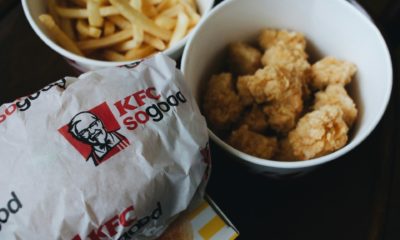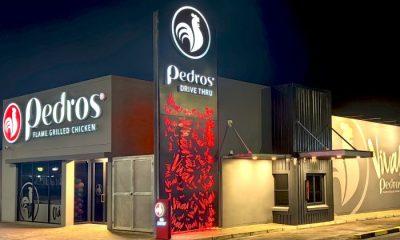Business
From 39-Minute Promises to Empty Storefronts: What Happened to Scooters and Domino’s Pizza in SA?

Inside the rise and quiet fall of two once-popular pizza brands in South Africa
Not too long ago, if you were hungry in Jozi, Durban or Cape Town, chances were you’d see a Scooters Pizza bike whizzing past with a bold promise: “Delivered in 39 minutes or it’s free.” Scooters Pizza wasn’t just a brand. It was a local phenomenon. And when American heavyweight Domino’s rolled into town, the pizza game felt like it was entering a new era.
Fast forward to 2025, and both brands have all but disappeared. In a country where fast food remains a daily staple for millions, the disappearance of two major pizza names has left more questions than answers.
South Africa’s QSR war: Only the strongest survive
South Africa’s quick-service restaurant (QSR) market is the biggest in sub-Saharan Africa. Yet it’s one of the toughest places to stay afloat. Brands are squeezed between high food inflation, rising operating costs, and an increasingly demanding consumer who expects more than just a warm box of cheesy carbs.
Where once pizza, chicken, and burgers ruled the streets, they now battle for attention alongside gourmet grocers, ready-made meal options, health-conscious cafés, and even ultra-competitive drive-thrus. In 2024, McDonald’s won a leasing war against KFC for a single Green Point site in Cape Town at R420,000 per month. That’s how fierce the turf war has become.
Scooters Pizza: The local hero that burned bright and fast
Launched in 2000 by Carlo Gonzaga, Scooters Pizza was the ultimate South African startup success story. Built on a bold delivery promise and inspired by Gonzaga’s early experience helping his father run a Debonairs franchise, the brand exploded.
By 2006, 100 Scooters Pizza stores were operating across the country. Gonzaga, along with his father and team, went on publicity stunts that made national headlines, including a frozen pizza delivery by motorbike from South Africa to Italy, with stops at the Rugby World Cup and Trafalgar Square.
Locals loved the speed, the energy, and the cheeky marketing. But behind the scenes, the business was beginning to feel the pressure of South Africa’s evolving fast food landscape.
Domino’s: The global giant that couldn’t crack the local code
When Taste Holdings brought Domino’s Pizza to South Africa in 2014, expectations were sky-high. At the time, Taste had decided to phase out Scooters and replace it with the global name, banking on brand recognition and a more modern image.
Domino’s quickly expanded to 85 stores, mainly in urban hubs. But expansion didn’t translate into domination.
The challenges came fast and hard: supply chain delays, fierce competition from local favourites like Debonairs, and the sense that Domino’s didn’t bring anything new or better.
Worse still, Domino’s struggled with scale. Despite its global footprint, it simply couldn’t establish the local logistics needed to compete with entrenched delivery models that understood the geography, consumer habits, and quirks of the South African market.
The collapse of a fast food empire
By 2019, Taste Holdings was in retreat. The group, which had once promised to bring Domino’s, Starbucks, and more to every corner of SA began exiting the food business entirely.
Scooters Pizza faded first, quietly disappearing from shopping centres and delivery apps. Then came the big blow: Taste couldn’t sell Domino’s.
Despite financial support from Domino’s Pizza LLC in the US and attempts to secure local buyers, no deal materialised. In a move that shocked the market, Taste placed Domino’s into voluntary liquidation.
“Unfortunately, a deal could not be concluded on terms acceptable to all parties,” Taste said at the time. “Further financial support was not provided. As a result, it was decided to place the respective entities into voluntary liquidation.”
Local reactions: More sadness than surprise
On social media, reactions were mixed. Some customers expressed nostalgia for Scooters’ quirky, fast delivery days. Others didn’t even notice Domino’s had left. The rise of local chains like Romans Pizza, the dominance of Debonairs, and the boom in non-traditional meal options left little space for sentiment.
One former Scooters franchisee posted on Facebook:
“We gave it everything. But the industry changed. Loyalty doesn’t pay rent.”
So, what can we learn from their exit?
Scooters Pizza and Domino’s were very different brands, but their demise tells a similar story: you need more than a good product to survive in South Africa’s fast-food space.
You need supply chain resilience, sharp pricing, constant innovation, and deep local knowledge. And when your competitors are paying R5 million a year just for a piece of prime drive-thru land, every slice matters.
In the end, pizza lovers didn’t abandon Scooters or Domino’s. The industry simply outpaced them.
What’s next for SA’s pizza scene?
While some might mourn the loss of these brands, the South African pizza scene is far from dead. If anything, it’s more vibrant than ever. Smaller craft pizzerias are popping up. Delivery apps are making it easier than ever to try new flavours. And the next big brand could be one that understands not just how to make pizza, but how to stay in the game.
Scooters and Domino’s brought speed, style, and international ambition to South Africa. But in the end, even fast food isn’t fast enough to outrun change.
{Source: BusinessTech}
Follow Joburg ETC on Facebook, Twitter , TikTok and Instagram
For more News in Johannesburg, visit joburgetc.com



























